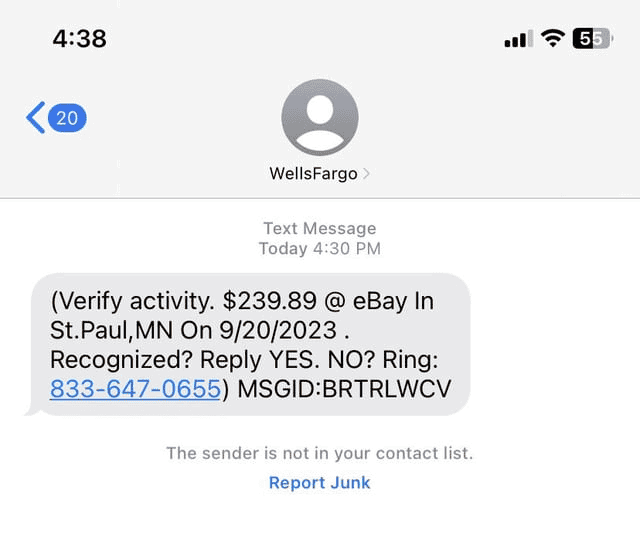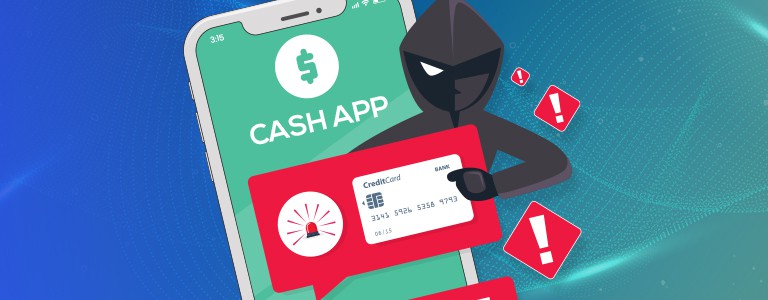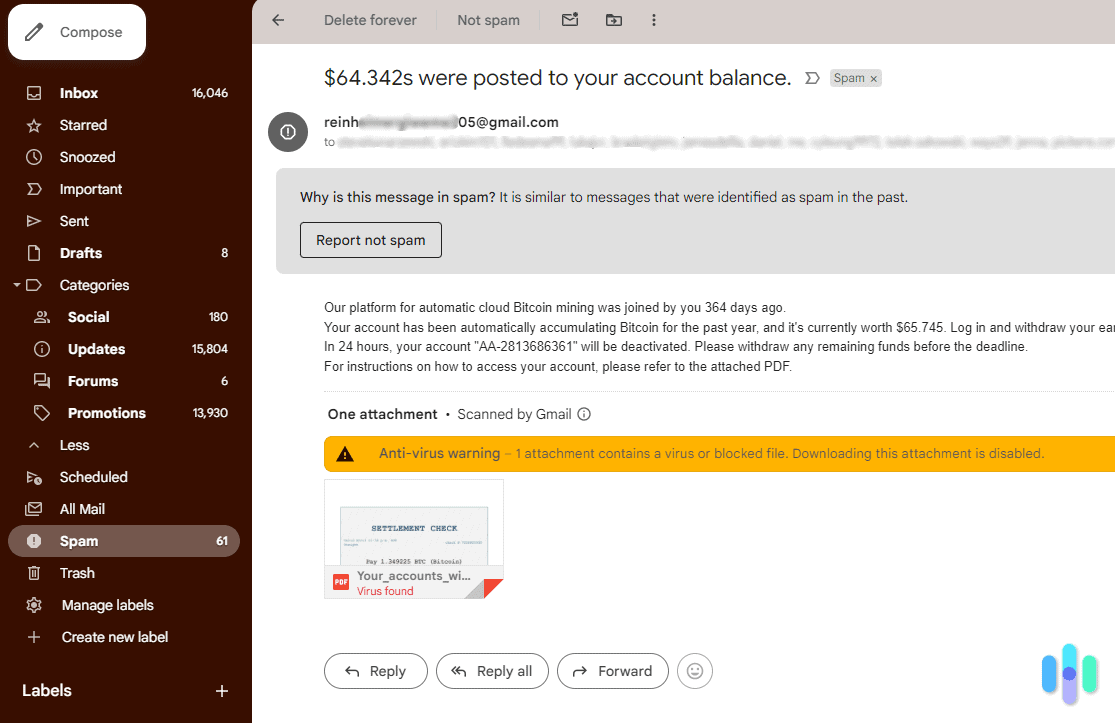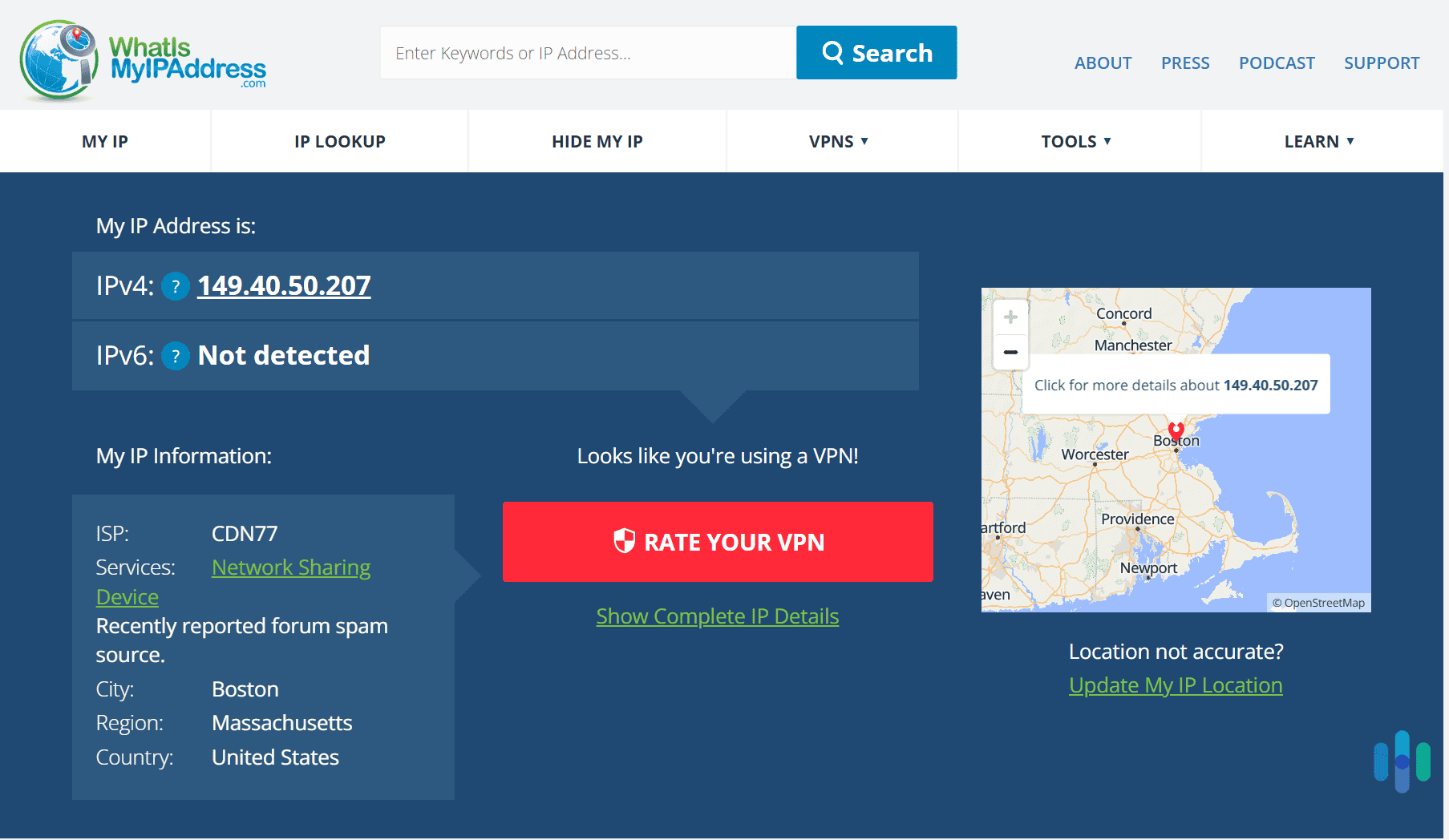“Your package is on its way!”
It’s hard not to get excited when the United States Postal Service (USPS) sends updates like this. But what should you do if you get text messages from USPS asking for a payment for missed deliveries?
This is just one of the signs of the USPS scam. It’s a form of smishing (SMS phishing). The message includes fake links that take you to a website that steals your personally identifiable information. That’s why we’ve created this guide to teach you how to spot these scams, protect yourself online and report them to the proper authorities.
Here’s everything you need to know.
The USPS Scam Explained
The USPS scam usually arrives by text message or email. It consists of an alleged update on a delivery and requests more personal information from you to complete the transaction.
The scammer’s goal is to trick you into clicking a malicious link. Once you click, you’re directed to a fraudulent website that mimics the official USPS site. This fake site will ask for sensitive information like credit card numbers, Social Security numbers, or login credentials. Never click a link in a message from the USPS as they do not send unsolicited messages with clickable links.
>> Learn More: Recognizing Phishing Attempts
Examples of the USPS Scam
There are a few different versions of the USPS scam. Here are the ones to look out for.
| Type of Message | Example |
|---|---|
| Redelivery fee | “We were unable to deliver your parcel. In order to complete the delivery, payment is required within 3 business days, or we will return the package to the sender. Click this link to organize payment.” |
| Incomplete address information | “Your USPS package has arrived at our warehouse and cannot be delivered due to incomplete address information. Please confirm your details using this link.” |
| Unpaid delivery fees | “Unfortunately, we can not finalize the delivery of your parcel due to unpaid fees. Please click the link to complete the payment and reschedule your delivery.” |
| Suspended package | “Your USPS package has been suspended due to the contents of the package. Click this link to complete the safety declaration and reschedule your delivery.” |
| Delivery preferences | “A package needs to be delivered to you but is pending an update. Click this link to update your preferences.” |
How to Spot a USPS Text Scam
Scammers continue to improve the look of their fake USPS messages to make them seem authentic. Thankfully, there are a few telltale signs of an illegitimate message, including:
- Spelling and grammar errors: The USPS uses professional language when sending correspondence. So, if you notice basic spelling mistakes or commas in the wrong place, it’s likely a scam.
- References to large sums of money: The USPS will never tell you that you’ve been sent a large money order or check, especially via text message. Feel free to ignore these, no matter how high the dollar figure is.
- Threats: If the USPS were going to take you to court or report you to law enforcement, they would call you. Delete any messages threatening you with prosecution for an undelivered package.
- Urgency: Another tactic scammers use is the race against time. You might only have 24 hours or three days to act before your package is returned to the original sender.
- Unusual tracking numbers: USPS tracking numbers feature 20 digits. It can also be a combination of 13 letters or numbers. For example, US 111 111 111 US. If it’s not in these formats, it’s a scam.
- Weird address formats: Like every letter or package from the USPS, your address will appear a certain way. If it looks different in the text message, it’s because it’s a scam.
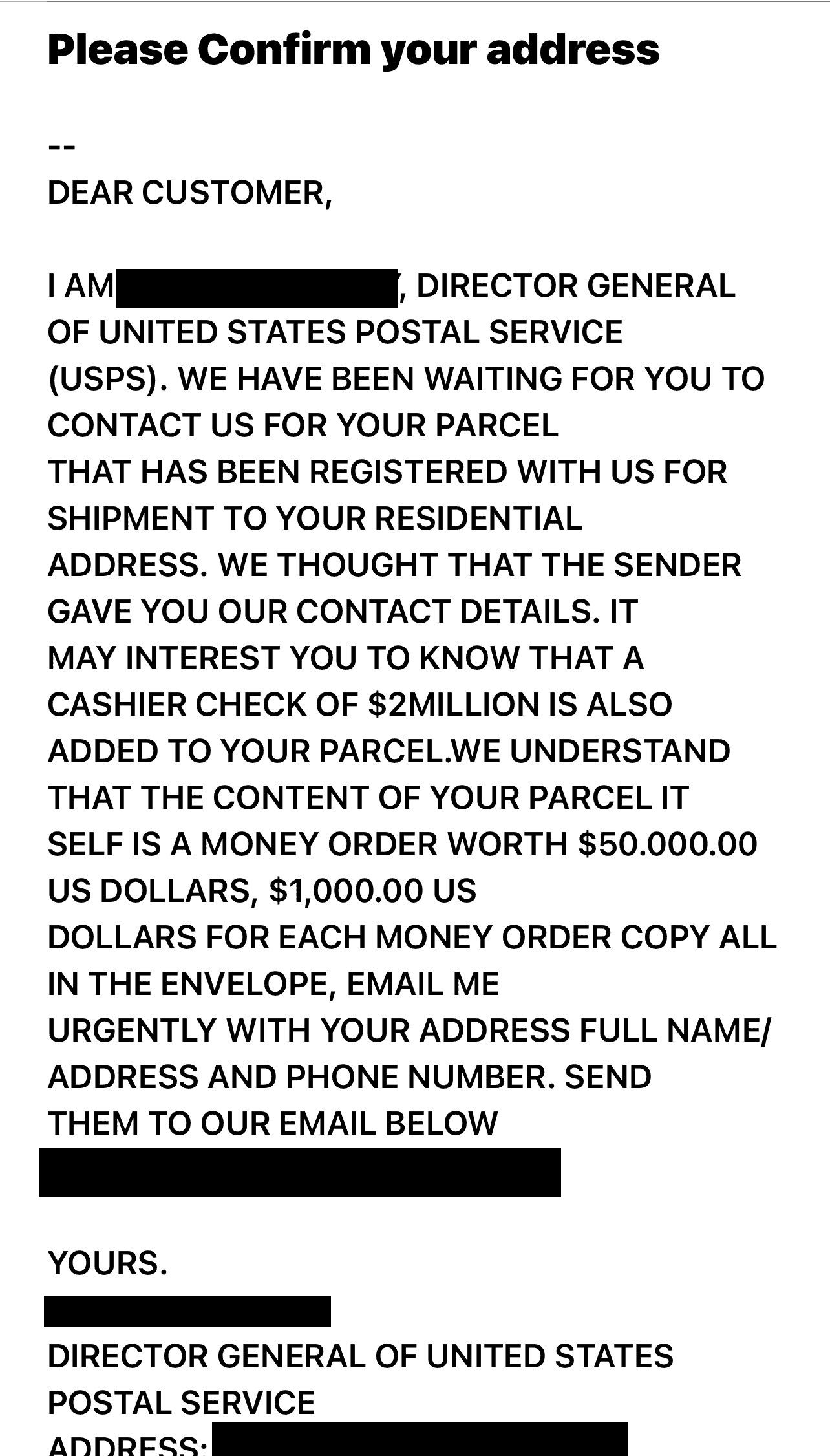
FYI: All United States Postal Service text messages come from USPS instead of a phone number. So, if you receive a message claiming to be the USPS from a mobile number, it’s fake.
What Could Happen?
So you’ve accidentally clicked on the link. We’re not going to lie to you; there are some consequences when you open a fake USPS website. This is what can happen:
Identity Theft
The USPS scam is specifically engineered to harvest your personal data. Once scammers have your information, they can open credit accounts, file fraudulent tax returns, or even access your existing financial accounts. In 2024, consumers reported losing over $12 billion to fraud, with identity theft being a major contributor.1
>> Check Out: Best Identity Theft Protection 2025
Malware and Viruses
Within the link may be an automatic download of a virus. It is programmed to extract information from your system and destroy your data. There’s also a chance it could be ransomware. This is when scammers lock you out of your device unless you pay them a large sum.
>>Read More: Do You Still Need Antivirus Protection Software in 2025?
Money Losses
If you’ve entered credit card information or bank account details to pay for the redelivery fees, you’ve given scammers access to your finances. They may use them to make purchases for themselves or attempt to take out lines of credit in your name.
FYI: Imposter scams remained the top fraud category in 2023, with reported losses of $2.7 billion.2 Business imposters alone accounted for $752 million in losses, while government imposters cost consumers $394 million. These scammers frequently pose as postal services, banks, or even family members in distress.
How You Can Protect Yourself
If you get a call, text message or email claiming to be from USPS, there are precautionary measures you can take to avoid being scammed.
- Don’t open attachments: Never click on suspicious links or open attachments from people or companies you don’t know. They may contain viruses, or malware or take you to websites designed to steal your personal information.
- Block spam numbers: Whenever you receive a spam call or text message, block the number on your phone. It should stop or reduce the number of scam attempts.
- Never reply: Don’t answer scam calls or reply to messages. It lets the scammer know the phone number is active, and they will continue to harass you.
- Turn on spam detection: iPhones and Androids have options to detect spam calls. They can immediately block them or notify you that the number is suspicious before answering the call or receiving a message.
- Install antivirus software: If you click on a link, antivirus software can stop the connection and warn you about scams and fraud before continuing. The database automatically updates to stay ahead of the latest USPS scams.
- Get identity theft protection: If someone steals your personal information, you can use identity theft protection services to lock your credit file, scan the dark web for your details and minimize the damage caused by scammers.
Did You Know: The Identity Theft Resource Center reported 3,205 data compromises in 2023, affecting more than 353 million individuals – a 78% increase in compromises compared to 2022.3 These breaches expose personal information that scammers can use in targeted USPS and other imposter scams.
How to Report a USPS Scam
Reporting any USPS scams can help protect other people who receive these messages, emails, or phone calls. We recommend doing the following:
- Email the USPS at spam@uspis.gov.
- Forward the text message to 7726.
- Send the details to the Federal Trade Commission.
- Contact the Federal Bureau of Investigation’s Internet Crime Complaint Center.
How to Defend Yourself From Scams
According to the FBI’s 2023 Internet Crime Report, phishing remained the most reported cybercrime.4 It accounts for 298,878 complaints – representing nearly 34% of all cybercrime reports received by the IC3. While phishing topped the complaint numbers, investment fraud caused the highest financial losses at $4.57 billion.
Staying protected requires a multi-layered approach. Modern scammers use sophisticated techniques to make their schemes more convincing. That’s why combining technological safeguards with awareness is crucial. Tools like antivirus software and identity theft protection services automatically update to counter new threats. Meanwhile, staying informed about the latest scam tactics helps you recognize red flags before clicking that suspicious link.
>> Up Next: How to Protect Yourself From Identity Theft
FAQs
-
What happens if you click on a scam link?
Opening a scam link can expose your phone or device to security threats. We recommend not entering any information or accepting any downloads. You should leave the website immediately and scan the device with an antivirus product.
-
What number does USPS text from?
USPS text messages do not come from a phone number. It will appear as USPS in your message app.
-
What does a USPS tracking number look like?
USPS tracking numbers have either 20 digits or a combination of 13 letters and numbers. You can check if a tracking number is real by going to https://tools.usps.com/go/TrackConfirmAction_input.
-
Does USPS send text messages?
The USPS sends text messages only if you request their service with a valid tracking number. It’s also important to note they will never send unsolicited messages, including website links or attachments.
-
Can a scammer get anything from a text message?
You can’t be hacked by opening or reading a text message. Your information can only be exposed if you reply with personal information or open links to fake websites.




